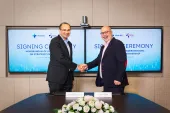
CHI accelerates the development and adoption of health tech firm innovations
The Centre for Healthcare Innovation invests $2.4m (US1.8m) to set a framework that can test the safety of market-ready innovations.
The Centre for Healthcare Innovation (CHI) in Singapore has launched a programme to assist in company healthcare innovations that face time-consuming and complex development in producing solutions.
This year, CHI’s programme invested up to $2.4m (US$1.8m) to help these startups test their innovative solutions at public healthcare institutions in Singapore.
An essential part of the programme, according to Associate Professor Tan Cher Heng, CHI’s executive director, is to assist innovations in complying with regulatory standards — quite a tall order not only in Singapore but in all markets.
“The processes that work in clinical workflows are often very well established and designed to be rigorous to ensure the safety of patients. This often poses a barrier to the deployment of innovation because we are trying to do something completely different,” explained Tan in an interview with Healthcare Asia.
“The regulatory standards in most if not all countries for medical care is high so there’s a high bar for any innovation-solution to try to prove its efficacy and its value before it can be used in the real world setting,” he added.
Tan explained that each startup will follow CHI’s framework, known as the Centre for Health and Innovation Evaluation framework (CHIEF), which will help evaluate the value of innovations.
“This is aimed to be a holistic evaluation – not just of the clinical efficacy and safety, but also looking at things like the technical, operational, and business capabilities of the solution,” he added.
What is CHIEF
In its guidebook, the CHI refers to CHIEF as designed to provide a systematic approach to guide study design and assess medical technologies, digital health technologies, and technology readiness (TRL) Level 5 and above.
The TRL is a scale used to assess and communicate the readiness of new technologies or new applications of existing technologies.
CHIEF has a five-step work progress for these technologies, which begins with an initial dialogue with stakeholders to test and evaluate new solutions.
The purpose of this first step is to establish communication channels, understand stakeholders’ goals, requirements, and expectations, and pre-determine specific value components for evaluating the solutions.
The second step is consultation on study design where the study is required to gather evidence for evaluation, and stakeholders involved in the design are encouraged to work with the CHIEF workgroup.
The collaboration makes sure the study design aligns with predetermined value components identified in the initial dialogue and captures the needed data effectively.
The third step is a midpoint check of the study to allow the CHIEF workgroup to monitor the progress of the study. In this step, stakeholders provide updates on the study’s progress, address any challenges encountered, and discuss potential adjustments to the study design.
Next, the fourth step is the collation and appraisal of evidence. This is where stakeholders will report results following relevant reporting guidelines. This ensures transparency, completeness, and standardised reporting.
The fifth and last step is the solution evaluation where the CHIEF puts the solution to the test. An independent panel of clinicians and industry experts assesses the solution’s attributes and performance against the pre-defined value components established in the initial dialogue.
Success story
One of the innovations that CHI helped is Presage, which is a thermal monitoring device that can detect fall incidents from patients in bed. It is further developed to predict when patients will fall before they get out of bed.
“The nurses could react in time to help the patients and this is an example of a successful innovation because it has since — with collaboration with the industry partner — become a product that is commercialised and marketed not just in Singapore, but in countries outside the region,” said A/Prof Tan.
Another successful innovation is the 3D printing centre, which began in 2021. The centre helps surgeons produce their implants.
“These are used for intraoperative guidance. The surgeons use the 3D printer models to help them more accurately place the surgical implants for orthopaedic surgeons and our patients, there is also the use for patient counselling,” said A/Prof Tan.
“We print the model and we explain to the patient more about the patient’s condition and they can see for themselves, their body anatomy. This helps them to better understand what kind of treatment they are going to undergo,” he added.
Overall, A/Prof Tan said he sees strong collaboration as a primary need to overcome problems in adopting innovative healthcare solutions.



















 Advertise
Advertise






